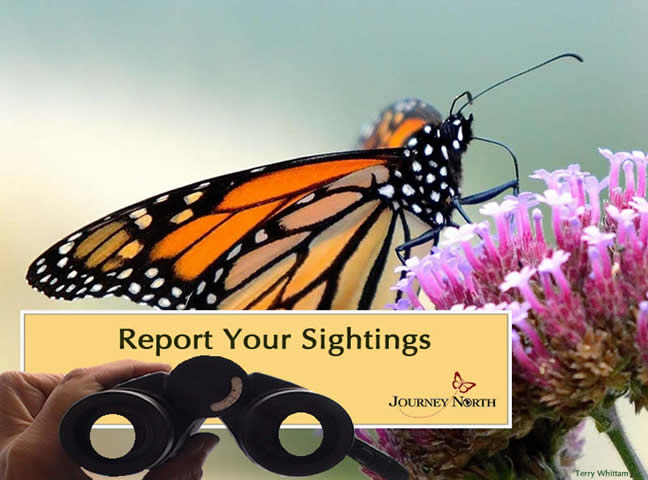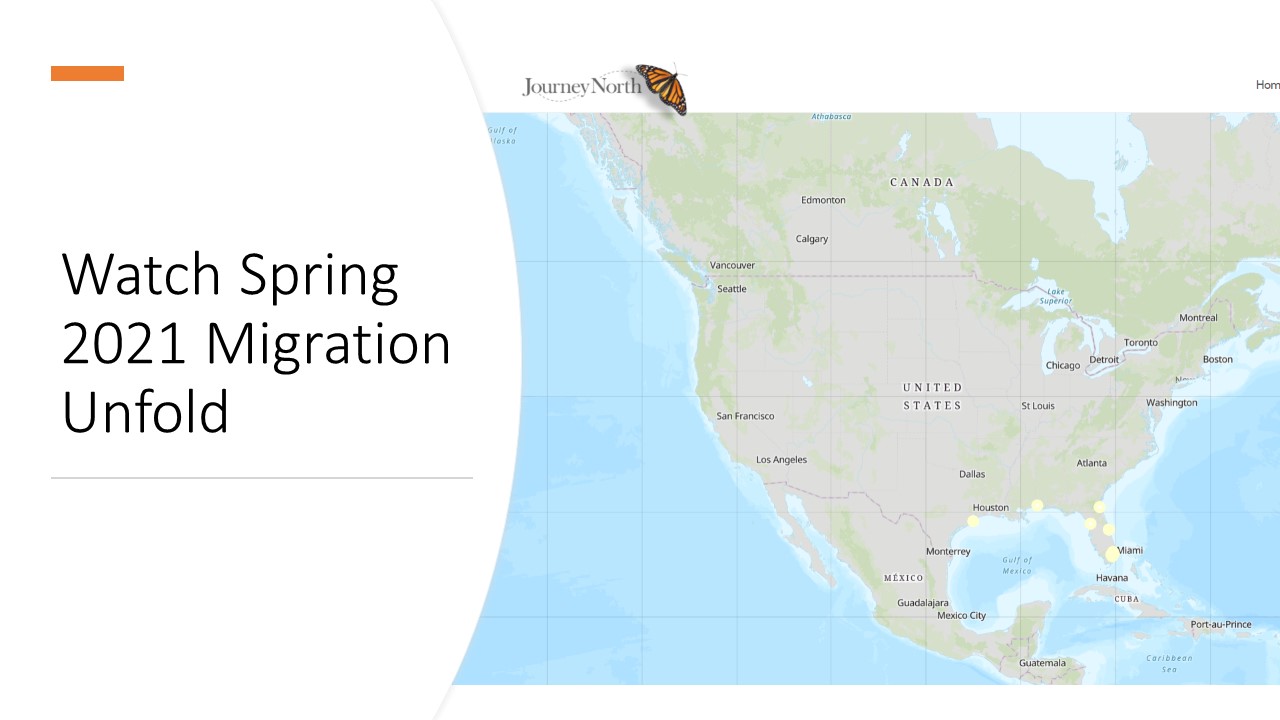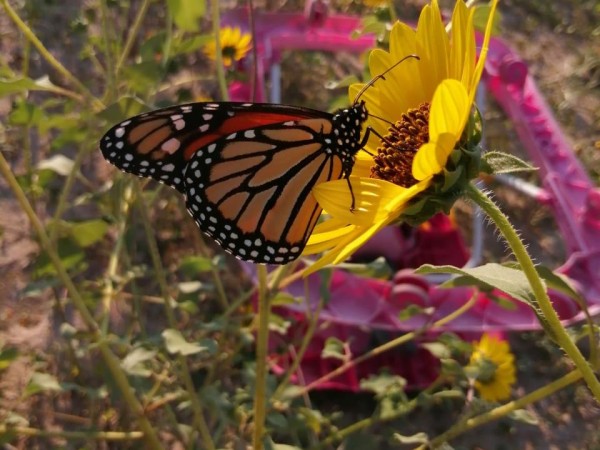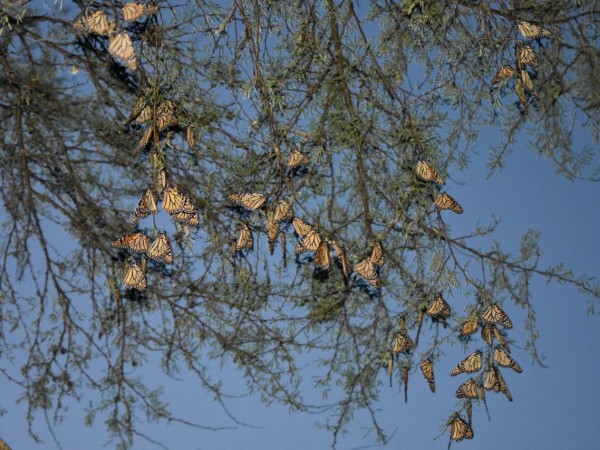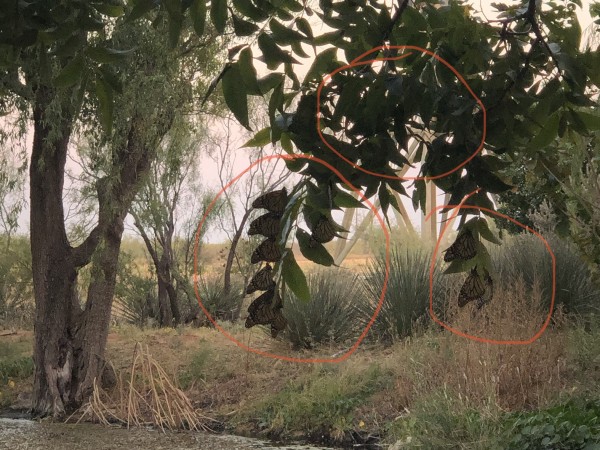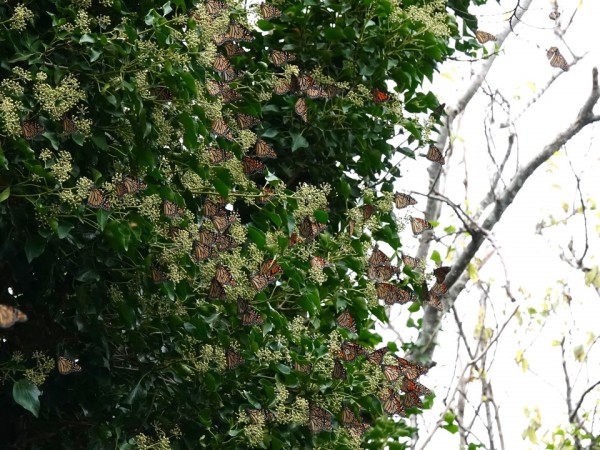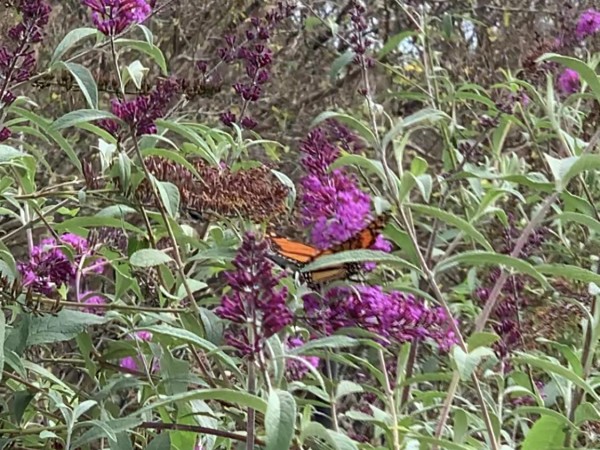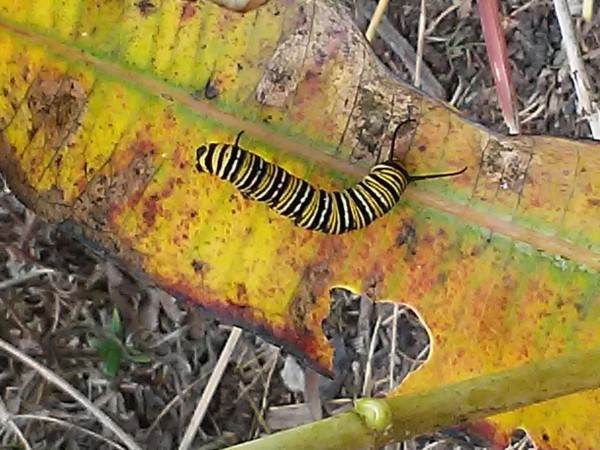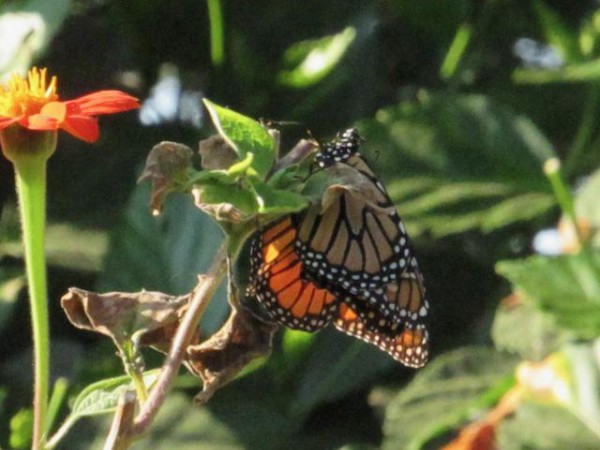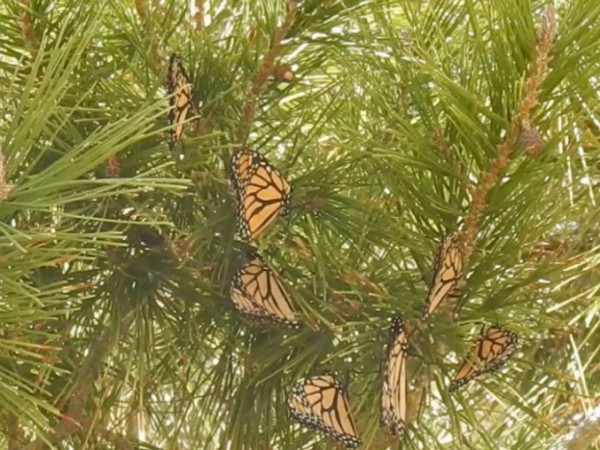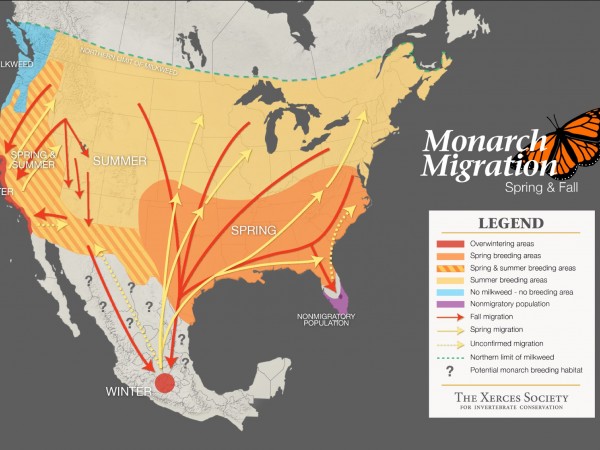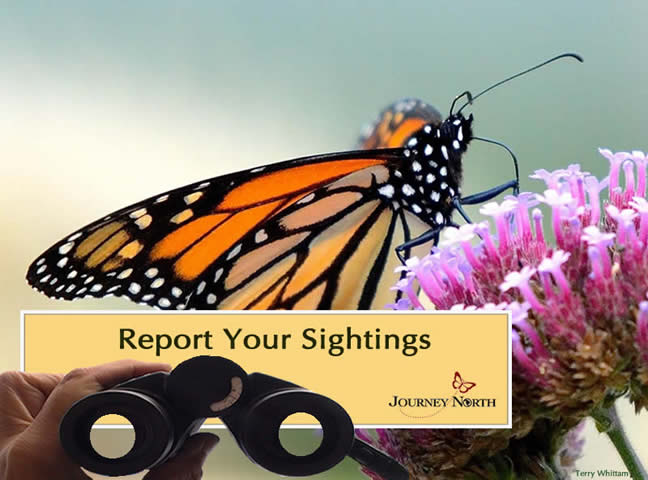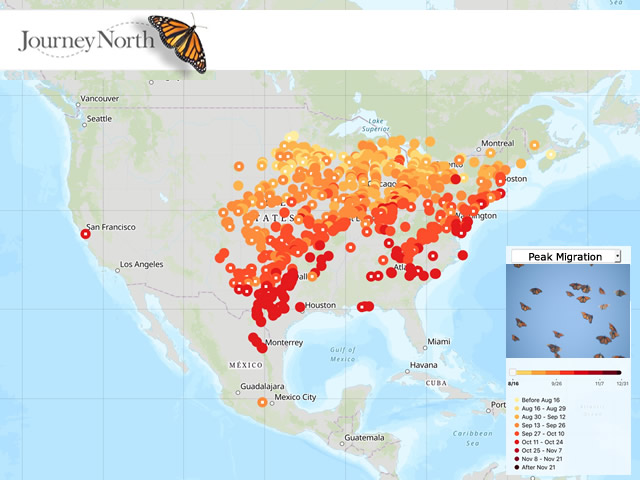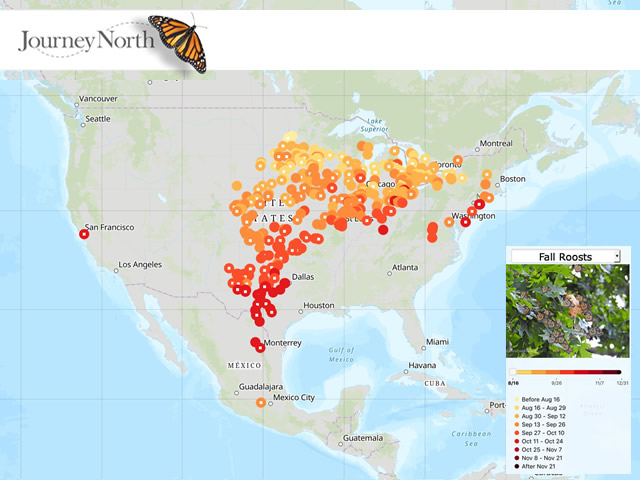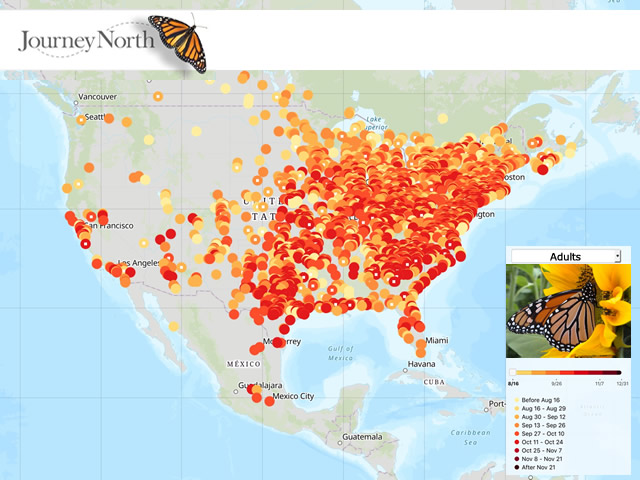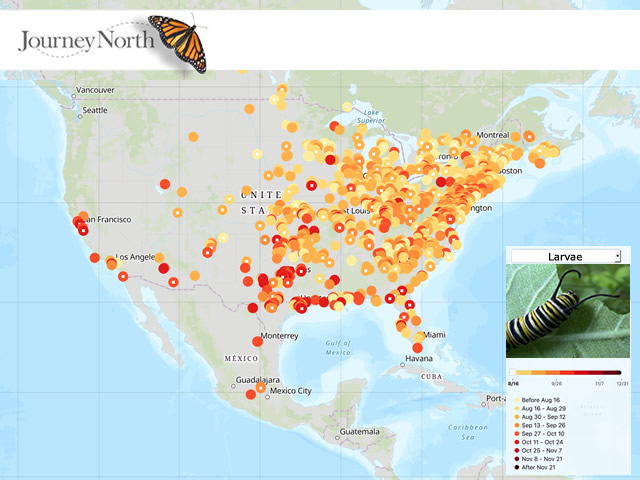Leading Edge Reaching into Mexico
The leading edge of migratory monarchs along the central flyway has arrived in Mexico, and numbers were high along the eastern flyway. Out west, monarchs are being reported in all western states except Washington.
Eastern Monarch Population
More Monarchs Observed in Mexico
Rocío Treviño, founder and coordinator of Correo Real, recently shared reports of peak activity and roosts in Mexico that signal the leading edge of migratory monarchs has arrived and is well on their way to overwintering grounds farther south in Michoacán and the state of Mexico.
Leticia Avendano in Acuña, Coahuila de Zaragoza: "Durante 1 hora vimos 60 monarcas alimentandose en estas flores temperatura 19 grados. [Translation: for 1 hour we saw 60 monarchs feeding in these flowers temperature 19 degrees.] (10/08/2020)
Jose Antonio Davila Paulin in Muzquiz, Coahuila de Zaragoza: "Los guardaparques del nacimiento de los negros Moscogos, observaron a las monarcas perchando en mezquites a la orilla del rio Sabinas, tarde soleada y tibia. Eran aproximadamente 500 mariposas. [Translation: The park rangers observed the monarchs perching in mesquite trees on the banks of the Sabinas river, on a sunny and warm afternoon. There were approximately 500 butterflies.] (10/12/2020)
Jose Antonio Davila Paulin in Sabinas, Coahuila de Zaragoza: "Hoy en la mañana reportan a las 9:00 am cientos de monarca volando ya muy alto en direccion hacia el sur. [Translation: Today in the morning they report at 9:00 am hundreds of monarchs flying already very high in the direction of the south.] (10/13/2020)
Central Flyway: Activity Remains High in Texas
Texas remains a hotspot of activity as increasing numbers of monarchs edge closer to Mexico.
Betsy in Odessa, TX: "Monarchs streamed in steadily all afternoon in 91-degree heat. Most nectared on the patch of blue mist before settling in nearby pecan trees. The favorite spots tonight are the low branches overhanging a pond. At least 10 roostings with an average of 20 monarchs in each." (10/09/2020)
Numbers Increasing Along Eastern Flyway
The Cape May Monarch Monitoring Project, a long-term study on monarch migration through Cape May, NJ, recently reported to Journey North that significant numbers of monarchs were there over a 7 day period; this is unusual as a big spike in monarch numbers generally decreases within 2 or 3 days as monarchs leave Cape May Point to continue their migration.
Mark in Cape May Point, NJ: "Tremendous numbers of monarchs have been at Cape May Point for the last 4 days, feeding on seaside goldenrod along the dunes and in various gardens around town. Roosts of up to 1200 have been found in the late afternoons. It's impossible to come up with anything resembling an accurate count; 10,000 is certainly low." (10/08/2020)
Vanessa in Raleigh, NC: "Counted about 41 this morning. Give or take a few. They were mostly flying from bush to bush and feeding. Some butterflies looked more recently emerged and younger. Their colors were more vibrant. I do feel they were migrating because I was at another location and saw 2 Monarchs flying up high by the trees." (10/09/2020)
Still Reports Up North
Dereck in St Catharines, ON: "Had about 25 show up today. They were hungry. They spent the afternoon nectaring on my African Giant Marigolds." (10/07/2020)
Monica in Richwood, OH: "I am shocked, shocked to have spotted a monarch caterpillar on a Sullivant's milkweed. After all, it is late in the season, over six weeks since my last sighting. I hope he makes it south." (10/12/2020)
Western Monarch Population
Favorable Conditions
This week monarchs are still being reported in all the Western states except Washington as they journey towards their overwintering destinations. They are now appearing in larger numbers in Arizona and California, expanding towards the West and some also to the South. Favorable conditions of warm and sunny days are helping monarchs on their way.
Araceli in Hagerman, ID: "I was at the Hagerman Cemetery attending my grandmother's funeral when 2 monarchs fluttered across my path and it was very lovely so I did more research about them and about their migration patterns because it seemed out of place." (10/02/2020)
Patricia in Oxnard, CA: "They're still reproducing. One female was laying eggs." (10/06/2020)
Read more of Gail Morris' Western Monarch Fall Report #7...
Keep Reporting
If you're still observing monarch activity, keep reporting! Your observations contribute to our collective understanding of monarch migration.
And remember to keep your eyes peeled for monarchs a few weeks after your last sighting – stragglers may yet come through!
Fall Monarch Migration 2020
Please report all monarchs you see: Adults, Eggs & Larvae, Overnight Roosts, Peak Migration Events


